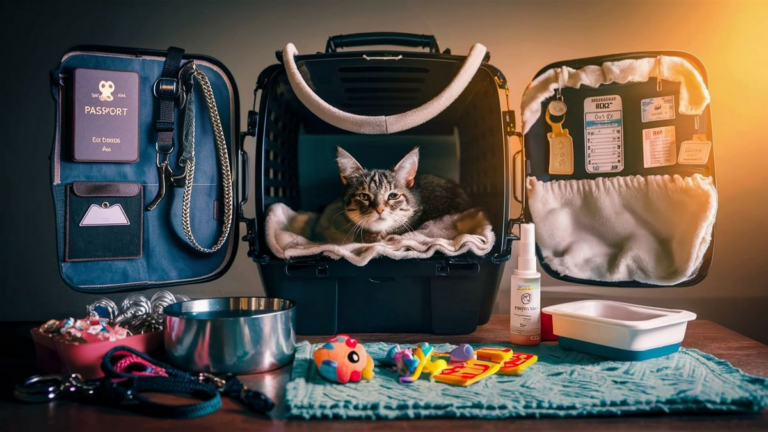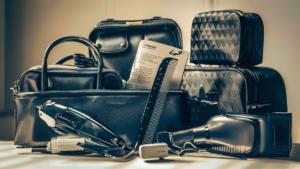Traveling with your feline friend can be an exciting adventure, but it also requires careful planning and consideration, especially when it comes to taking a cat on a plane. Whether you’re relocating, going on vacation, or simply need to bring your cat along for the journey, there are several important factors to keep in mind to ensure a safe and comfortable trip for both you and your furry companion.
Preparation
Before embarking on your journey, it’s essential to make necessary preparations to minimize stress and ensure a smooth travel experience for your cat. Start by familiarizing your cat with their carrier well in advance of the trip. Leave the carrier open in your home with cozy bedding and enticing treats to encourage your cat to explore and feel comfortable inside.
Additionally, ensure that your cat is up-to-date on vaccinations and has a recent health checkup from your veterinarian. Some airlines may require a health certificate issued within a specific timeframe prior to travel, so be sure to check the airline’s requirements well in advance.
Choosing the Right Carrier
When traveling by plane, selecting the appropriate carrier for your cat is crucial. Opt for a carrier that is spacious enough for your cat to stand up, turn around, and lie down comfortably. The carrier should also be well-ventilated and secure to prevent any escapes during transit.
Consider investing in a carrier with soft sides, as they are generally more comfortable for your cat and can easily fit under the seat in front of you during the flight. It’s also a good idea to label the carrier with your contact information in case it gets misplaced during the journey.
Flight Preparations
On the day of your flight, it’s essential to feed your cat a light meal several hours before departure to prevent motion sickness during the flight. Additionally, provide access to water right up until check-in to ensure your cat stays hydrated throughout the journey.
During check-in, inform the airline staff that you are traveling with a cat and follow their instructions regarding documentation and carrier requirements. Once on board, place the carrier under the seat in front of you and ensure it is securely fastened for takeoff and landing.
In-Flight Comfort
To keep your cat calm and comfortable during the flight, consider covering the carrier with a lightweight blanket or towel to provide a sense of security and reduce stimulation from the surrounding environment. Additionally, refrain from opening the carrier during the flight unless absolutely necessary to avoid potential escapes.
If your cat shows signs of distress or anxiety during the flight, try speaking to them in a soothing tone and offering reassurance through the carrier door. However, avoid removing your cat from the carrier while in the cabin, as this can pose a safety risk for both your cat and other passengers.
Post-Flight Care
Upon arrival at your destination, prioritize your cat’s comfort and well-being by offering them a quiet space to rest and recover from the journey. Provide food, water, and a clean litter box as soon as possible, and monitor your cat for any signs of stress or discomfort in the hours following the flight.
If you notice any unusual behavior or symptoms of illness, seek veterinary attention promptly to address any potential health concerns. With proper preparation and care, traveling with your cat on a plane can be a manageable and rewarding experience for both you and your beloved pet.
Travel Anxiety Solutions
Some cats may experience anxiety or stress when traveling, which can manifest in various ways such as excessive meowing, pacing, or hiding. To help alleviate travel anxiety, consider using natural calming remedies such as pheromone sprays or diffusers designed specifically for cats. These products can create a calming environment and reduce stress during the journey.
Behavioral Training
Implementing behavioral training techniques can also help prepare your cat for travel. Gradually acclimate your cat to the sights, sounds, and sensations associated with traveling by taking short car rides or practicing with the carrier in different environments. Positive reinforcement, such as treats or praise, can encourage your cat to associate travel with positive experiences.
Frequently Asked Questions
| Question | Answer |
|---|---|
| Can I sedate my cat for air travel? | It’s generally not recommended to sedate cats for air travel, as sedation can increase the risk of complications and respiratory issues during the flight. However, if your cat experiences extreme anxiety or stress, consult with your veterinarian for appropriate alternatives. |
| What if my cat needs to use the litter box during the flight? | Most cats can hold their bladder for the duration of a flight, especially if you limit their food and water intake before departure. However, if you anticipate a long journey or have concerns about your cat’s comfort, consider lining the carrier with absorbent pads or providing a small, disposable litter box. |
| How can I prevent my cat from becoming dehydrated during the flight? | Ensure your cat has access to water before and during the flight. You can place a small, spill-proof water dispenser in the carrier or offer ice cubes for your cat to lick. However, avoid overhydrating your cat, as this can lead to accidents or discomfort during the journey. |
See also:






